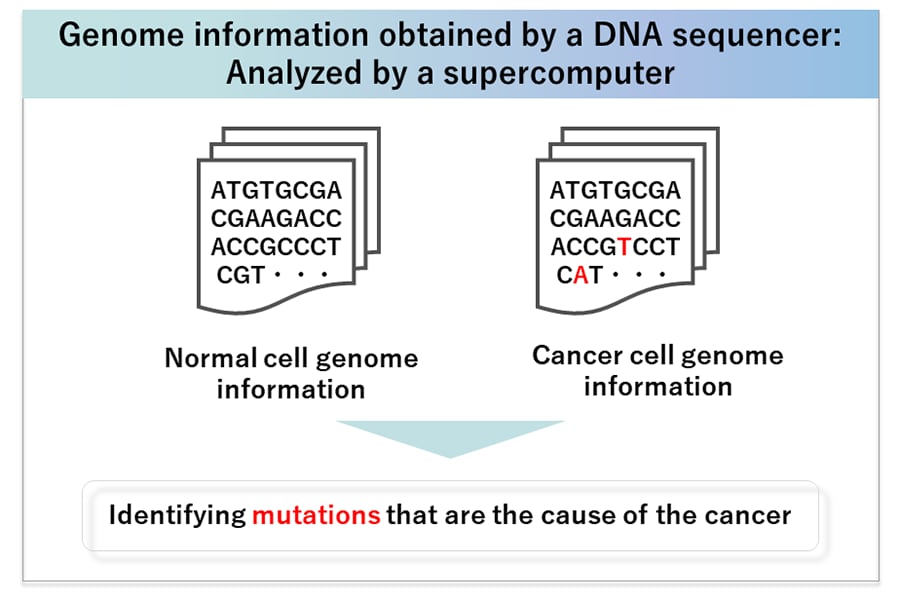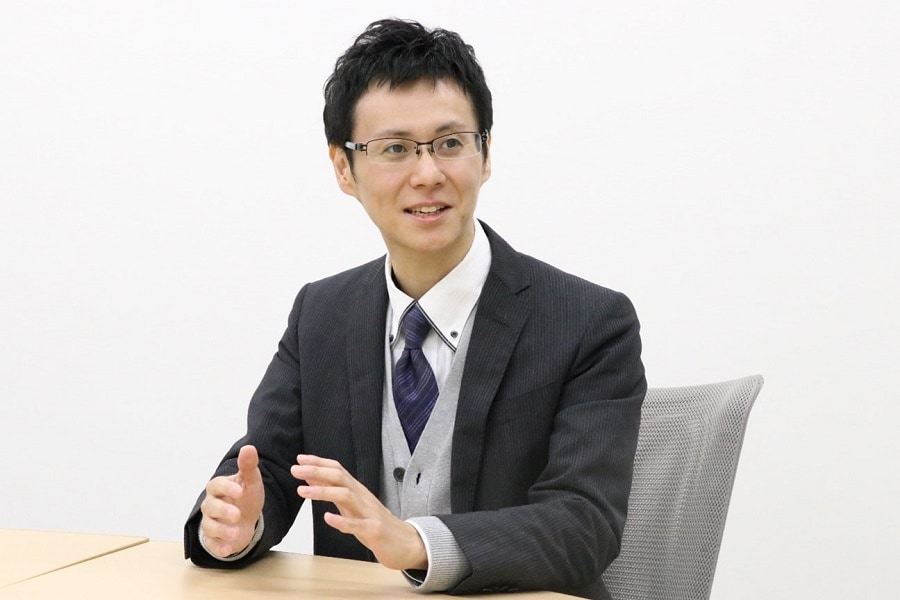Saving Cancer Patients: Cancer Genomic Medicine Using SuperComputer
Jun. 12, 2023
Arisa Murata

As the population in Japan ages, it is reported that, currently, one out of two Japanese will contract cancer. Patients and families continue to be pressed by the huge financial, physical, and emotional burden of cancer treatment. To improve this situation, researchers are working on "genomic medicine," by which genomic information is analyzed and used for treatment.
For over 30 years, the Institute of Medical Science at the University of Tokyo has been contributing to the development of genomic medicine with its research into the human genome. At present, it has become possible to determine the characteristics and causes of the cancers of each individual and to provide appropriate treatment. This advance has been enabled by a supercomputer built by Hitachi called "SHIROKANE." The person in charge, whose desire is "to save as many patients as much as possible," answered questions for this article.
What is "Cancer Genomic Medicine"?

Standard treatments for cancer include surgery, radiation, and anticancer drugs. However, there are cases in which the expected effects are not obtained, and then the condition progresses. In response to this challenge, a new choice—personalized medicine that uses the genome, or genetic information—is heightening expectations.
Cancer is believed to be caused by accumulating genomic abnormalities. In cancer genomic medicine, the area where the abnormality has occurred is identified through an investigation of cancer cell genes. This lets physicians provide optimal treatment methods tailored to the characteristics of individual patients, such as the selection of potentially effective anti-cancer drugs.
Delivering high-speed analysis of 3.2 billion strings

The Human Genome Center at the Institute of Medical Science at the University of Tokyo was among the first to begin work on cancer genomic medicine. Professor Seiya Imoto, who serves as director, reflected on this period of initial research as follows:
"For over 10 years, we have conducted research using genome information in clinical settings in collaboration with IMSUT Hospital at the Institute of Medical Science. Our first case of success was a patient with leukemia, a cancer of the blood, whose treatment was not going well. By analyzing the entire genome and changing the treatment method based on the results, the patient experienced a recovery. It was a moment when I gained confidence in the impact of cancer genomic medicine."

However, analyzing genome information that has 3.2 billion strings is no easy task. This is where the SHIROKANE supercomputer built by Hitachi took on an essential role.
Professor Imoto said "When we take a sample of cancer cells from the cancer patient and run it through a DNA sequencer, it produces huge amounts of fragmentary genome information. We then compare the cancer genome information with genome information from normal cells to find out where mutations exist. This requires tremendous amounts of calculations, which requires the power of a supercomputer."

A limited timeframe for transferring huge amounts of research data
The high-speed calculations of Hitachi supercomputers make genome analysis possible, with calculation speed increasing by the year. Shirokane4, the precursor to Shirokane6, required over 10 hours for analysis. However, Shirokane6, which began operation in April 2022, can perform the same task in less than one hour. Yohei Kashimura of Hitachi, Ltd., a leader in the building of supercomputers, spoke about his passion for the project:
"Faster computer analysis times lead to quicker discovery of the treatment methods that are best for patients. So, while building the computer, we were keenly aware that a Shirokane6 calculation speed increase of even one second could be the difference between saving and not saving a life."

According to Yohei, however, the project was beset with problems.
"We ran up against a number of previously unforeseen situations, including work system revisions due to the COVID-19 pandemic, logistics logjams, and prolonged delivery times caused by a shortage of semiconductors. Under these circumstances, we had to transfer about 18 petabytes of research data from Shirokane4 to Shirokane6. But the system shutdown period allowed for doing this was just one week. Under the strain of having to reliably transfer research results accumulated up to now, we managed to overcome a variety of difficulties."
Saving as many lives as possible
After getting past the difficulties, Shirokane6 was finally completed. Yohei now hopes that it will be used by as many research facilities and private-sector companies as possible as they apply it not only to genomic medicine but also to various fields in the life sciences. He said:
"I get a sense of meaning and pride from contributing to work that saves people's lives. I will continue working with our customer, the Institute of Medical Science, to find optimal solutions for next-generation genome analysis."
Professor Imoto, sharing his hopes of using Shirokane6 to save as many cancer patients as possible, said:
"I, too, have the regrettable experience of not being able to help a friend who contracted cancer. However, the last few years has seen whole genome analysis gain widespread use. I believe that, as we get more researchers onboard using SHIROKANE, it will lead to the maximal saving of lives."



